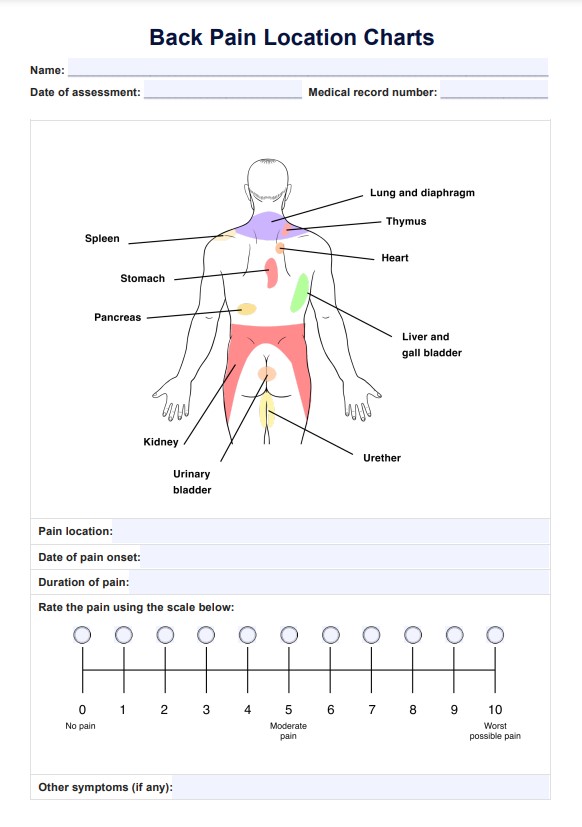A Back Pain Locator Chart is a visual tool that helps patients and healthcare providers pinpoint the areas of the back where pain is felt, facilitating accurate diagnosis and treatment.

Back Pain Location Charts
Optimize the back pain assessment process with the Back Pain Location Chart. Download now to streamline your evaluation for improved patient care.
Use Template
Back Pain Location Charts Template
Commonly asked questions
Anxiety and depression are commonly associated with chronic pain, as ongoing discomfort can significantly impact emotional well-being.
To reduce worry about back pain, engage in regular gentle exercise, practice stress-relief techniques such as mindfulness or meditation, and consult with a healthcare professional to develop a management plan tailored to your specific condition.
EHR and practice management software
Get started for free
*No credit card required
Free
$0/usd
Unlimited clients
Telehealth
1GB of storage
Client portal text
Automated billing and online payments











